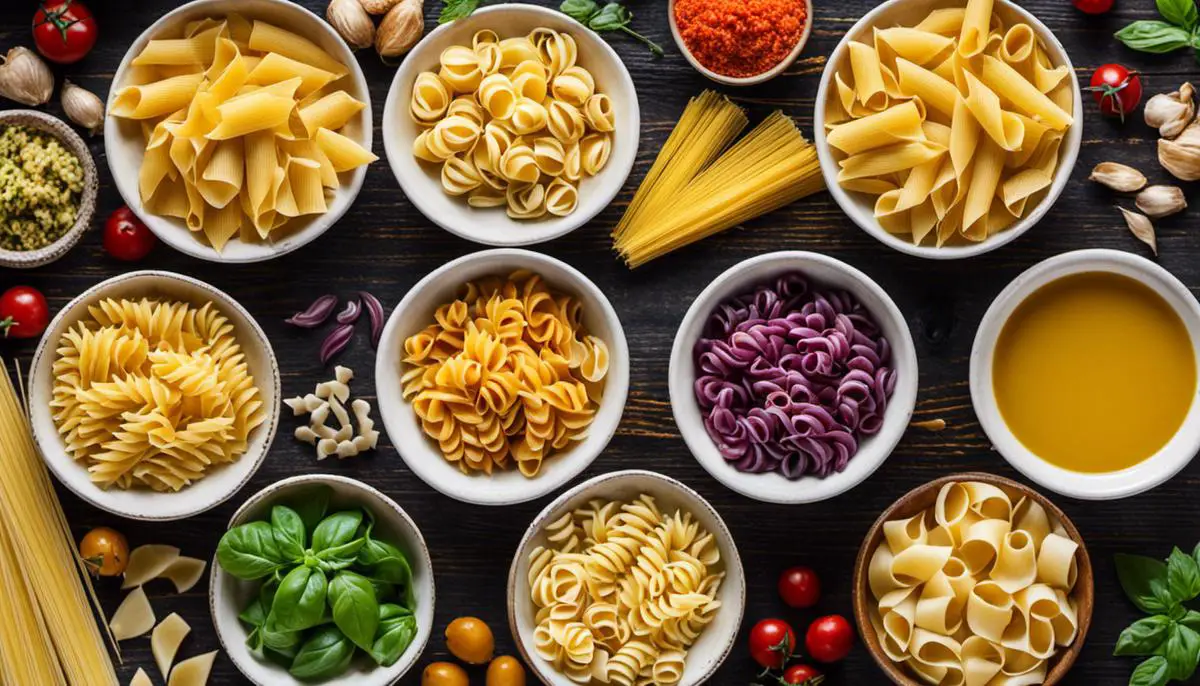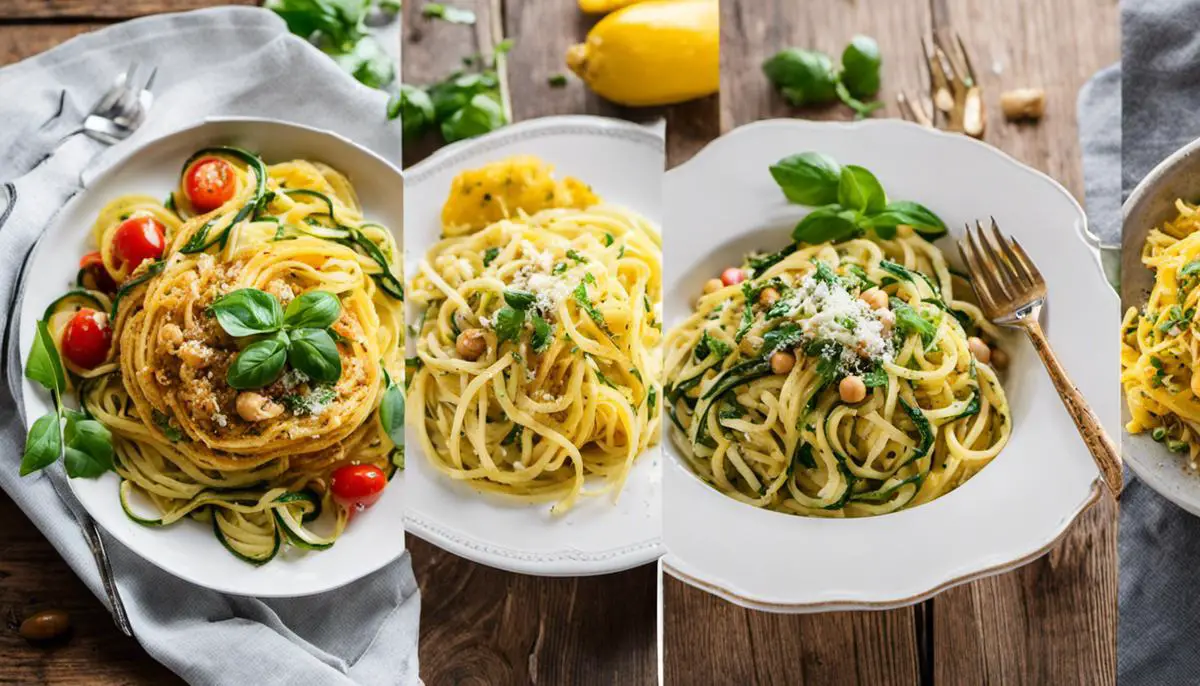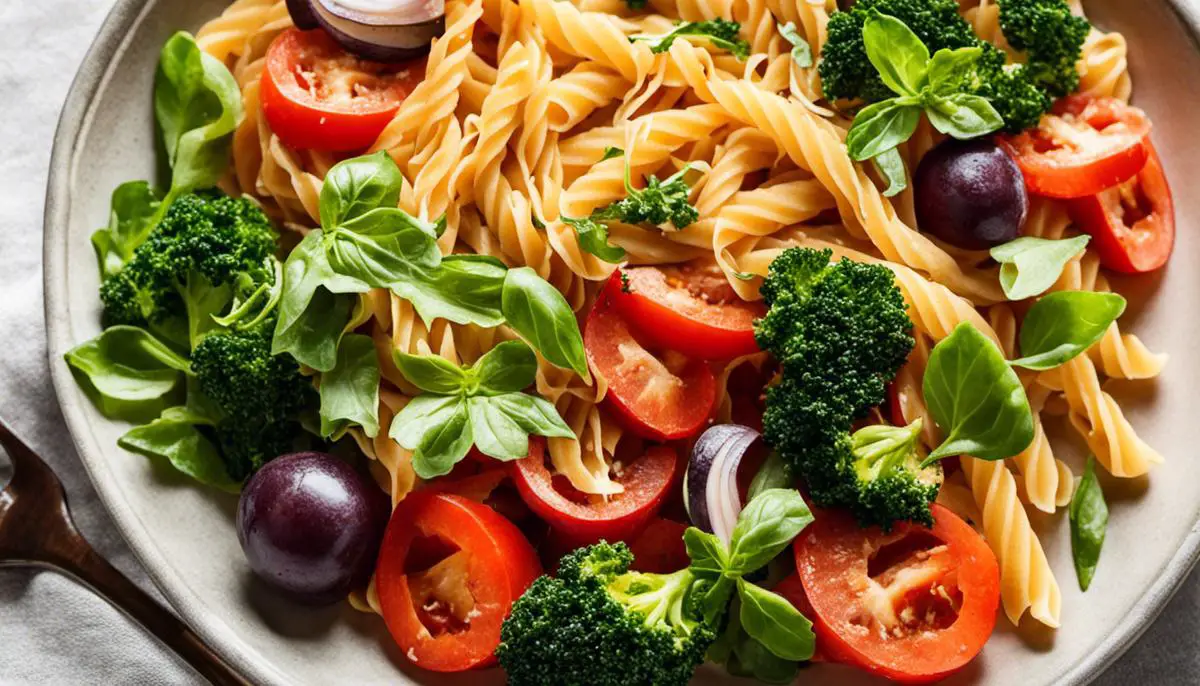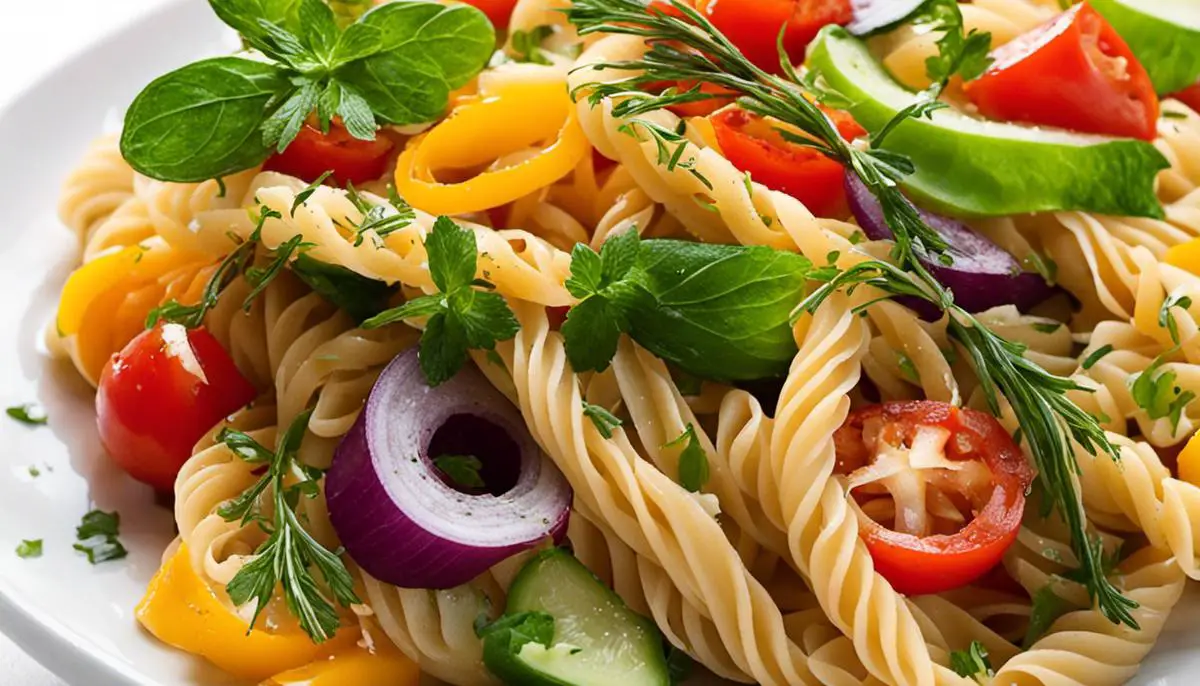Table of Contents
In the contemporary world where health and fitness are becoming top priorities, it’s essential to understand and implement healthier eating choices in our daily lives. As one of the staple food worldwide, pasta often gets a bad rap for its high-calorie content and perceived lack of nutritional value. However, it’s far from the truth. When prepared appropriately and combined with the right ingredients, pasta can transform into a nutritious, calorie-controlled meal. This essay delves into the nutritional aspects of pasta, explores tasty and healthier pasta alternatives, advises tips to reduce calorie intake in pasta-based meals, and encourages the joy of cooking and trying out new healthy pasta recipes.
Understanding Nutritional Values
Understanding Nutritional Values of Different Types of Pasta
Pasta, a staple of many diets worldwide, boasts various nutritional values depending on the type and the ingredients used in its preparation. Standard pasta, usually made from semolina flour, provides a reliable source of carbohydrates for energy, while also offering essential B-vitamins and iron. The exact nutritional content may vary slightly depending on the brand and the type of flour used, with some versions having a higher concentration of certain nutrients.
Whole Grain Pasta Benefits
One healthful option for pasta lovers is whole grain pasta, which has been gaining popularity due to its increased nutritional value compared to regular pasta. Whole grain pasta, as the name suggests, is made from whole grains which are left intact during the milling process. This means it retains more fiber and nutrients, including zinc, magnesium, and B vitamins, making it a more wholesome choice. Regular consumption of whole-grain foods has been linked to lower risks of heart disease, diabetes, and certain types of cancer.
Exploring Gluten-Free Pasta Options
For those with gluten intolerance or celiac disease, gluten-free pasta is a viable choice. Gluten-free pasta typically comprises alternative grains like rice, corn, or quinoa, which are naturally gluten-free. While their nutritional profiles can differ, these pasta options often offer rich amounts of fiber, protein, and other vital nutrients. Always be sure to read labels as some gluten-free pastas might contain added sugars or less desirable ingredients.
Benefits of Fiber-Rich Ingredients
Another way to boost the nutritional content of your pasta dish is by incorporating fiber-rich ingredients. Vegetables like spinach, tomatoes, or bell peppers can be added directly to the pasta sauce, while beans or lentils make great protein-packed additions to pasta salads. By increasing fiber intake, you could potentially lower your risk for heart disease, stroke, and diabetes, while also improving the health of your skin and aiding in weight loss.
Choosing Healthy Pasta Ingredients
The ingredients used in your pasta recipe play a significant role in determining the overall nutritional profile of your meal. Opting for fresh, low-sodium sauces, lean meats, and plenty of leafy greens can significantly elevate the health factor of any pasta dish. Similarly, choosing herbs and spices over salt for seasoning can help reduce sodium intake.
Regular vs. Portion-Controlled Serving Sizes
Finally, remember that portion control is key when eating pasta. A typical serving size is generally smaller than what most of us would serve ourselves. By understanding and adhering to proper serving sizes, you’ll keep calorie intake in check while still being able to enjoy your pasta dishes. Whole grain or fiber-rich pasta can help you feel fuller faster, making it easier to stick to healthy portion sizes.
Learning to recognize and harness the nutritional benefits of different types of pasta, and their respective ingredients, can significantly enrich your diet – turning your beloved pasta dishes into an avenue for well-rounded nutrition.

Exploring Healthy Pasta Alternatives
Exploring Zucchini Noodles or “Zoodles”
Zoodles are a popular low-carb, gluten-free alternative to traditional wheat pasta. The creation of zoodles involves spiraling or shaving fresh zucchini into thin, noodle-like strips. They offer a similar “al dente” bite to traditional spaghetti but are much lower in calories and carbs, making them a great choice if you’re watching your waistline or if you’re gluten intolerant.
Zoodles offer a fresh, slightly sweet taste and absorb sauces well, which allows for a variety of flavor profiles in your dishes. Their texture can be made softer or crunchier, depending on how long you choose to cook them. However, you should be aware that overcooking zoodles can cause them to become mushy and lose their pasta-like texture. It’s generally recommended to sauté zoodles for just a few minutes to achieve the best result.
The Versatility of Spaghetti Squash
If you’re looking for a different texture in your pasta alternative, spaghetti squash might be the answer. This type of squash gets its name from the unique way its flesh separates into spaghetti-like strands after it’s cooked. It has a neutral taste, which means it can easily adopt the flavor of any sauce, just like traditional pasta.
To prepare spaghetti squash, it needs to be halved and roasted in the oven. Once cool, you simply use a fork to fluff the strands out of the squash shell. The result is a noodle-like texture that falls somewhere between al dente pasta and soft, regular squash. It offers a bit more bite than zoodles and is an excellent choice for heartier sauces and baking.
Introducing Chickpea Pasta
If upping your protein intake is your goal, then chickpea pasta might be your best bet. Made from ground chickpeas, this pasta alternative contains fewer carbs and more protein than regular pasta, while still maintaining a similar shape and texture.
The flavor of chickpea pasta is mildly nutty, which might take a bit of getting used to. Its texture is denser, so it doesn’t necessarily mimic traditional pasta perfectly, but its nutritional benefits well make up for this. It works well in a wide array of dishes, especially those with creamy or tomato-based sauces, where the nutty flavor of the pasta itself can become a subtle, complementary background flavor.
Each of these pasta alternatives offers unique benefits and drawbacks regarding taste and texture. Depending on your dietary needs and flavor preferences, you might find that you enjoy one alternative more than the others. Try experimenting with each type in your favorite dishes to see which you like best.

Reducing Calories in Pasta Dishes
Choosing the Right Pasta
If your goal is to reduce calories in your pasta dishes, start by choosing the right pasta. Opt for whole grain pasta over regular pasta. Whole grain pasta is higher in fiber and tends to be more filling, which can help prevent overeating. Also consider portion sizes. A cup of cooked pasta is typically sufficient for one serving. Remember, the bulk of your dish should come from the additional ingredients, not the pasta.
Light & Flavorful Sauces
A common culprit of high-calorie pasta dishes is the sauce. Creamy sauces are often rich in fats and subsequently high in calories. To lighten up your dish, use tomato-based sauces. They are generally lower in fat and calories while still providing plenty of flavor. If you enjoy creamy sauces, try lightening them up by using low-fat dairy products or unsweetened almond milk.
Include More Veggies
Adding more vegetables to your pasta dishes not only reduces calories but also adds color, texture, and flavor. Vegetables are low in calories and high in fiber, helping you feel full without taking in unneeded calories. Choose a variety of vegetables for a mix of flavors and nutrients. For instance, spinach, bell peppers, zucchini, and tomatoes can all make wonderful additions to pasta dishes.
Choosing Lean Proteins
To complete your low calorie, flavor-packed pasta dish, add in lean proteins. Proteins like chicken, turkey, fish, and tofu are all low in fat and high in protein. This can help keep your meal balanced and filling without adding a great number of calories.
Consider Alternative Pastas
If you want to further cut back on calories and carbs, there are numerous pasta alternatives available. Zoodles (zucchini noodles), spaghetti squash, and lentil or chickpea pasta can all make excellent, lower-calorie substitutes for traditional pasta. Experiment to find which ones you enjoy most.
Healthy Cooking Methods
Finally, the way you cook your pasta and ingredients can also affect the overall caloric content. Aim to steam, grill, or roast your vegetables, and use cooking spray, broth, or a small amount of olive oil versus butter. For your proteins, opt for grilling, baking, or broiling over frying. These adjustments won’t compromise flavor but will keep your pasta dish healthy and lower in calories.

Cooking and Trying Healthy Pasta Recipes
For a healthier pasta meal, it’s essential to choose nutrient-dense, low-fat ingredients. Opt for whole grain pasta, which is rich in fiber and complex carbohydrates, helping you feel fuller faster. Choose bright and colorful vegetables – the darker or brighter the color, the higher the nutrient content. Tomatoes, bell peppers, spinach, and broccoli are all excellent options. For protein, go with lean options like chicken breast, fish, or tofu. Finally, try to use less sodium and fat in your cooking – select fresh herbs, spices, or a touch of extra virgin olive oil to boost flavor instead of relying on salt and butter.
Start by boiling a large pot of water and adding your whole grain pasta. Ensure the pasta is cooked al dente – it should be firm when bitten. This not only retains more nutrients, but the pasta will be slower to digest, keeping you feeling fuller for longer. Next, in a separate pan, sauté your chosen vegetables and protein in olive oil. Add herbs and spices to taste. Once your pasta is cooked, drain it well. Instantly toss the hot pasta into the pan with the vegetables and protein. Stir everything together, allowing the flavors to meld. If you wish, sprinkle with a modest amount of cheese or a splash of your favorite healthy sauce.
Once you have mastered a basic healthy pasta dish, don’t stop there. Experiment with different recipes. You could try a primavera with a variety of steamed vegetables or a tangy pasta pomodoro with fresh tomatoes and basil. You could also explore international flavors. Try a pasta salad with Greek-inspired elements like feta cheese, cucumbers, and olives, or go for an Asian-inspired noodle dish with soy sauce, ginger, and plenty of vegetables. With more practice, you’ll be able to put your own twist on any healthy pasta recipe.
As you become more confident in your cooking abilities, you can try modifying recipes by substituting ingredients or adding new ones. Love a spicy kick? Add a dash of crushed red pepper to your pasta. If you enjoy the zing of citrus, include a squeeze of lemon juice in your pasta salad. You’re striving for nutritious and tasty balance, so be fearless and creative in adding or subtracting components to fit your palate.

Remember, the journey towards a more conscious and healthier diet doesn’t require drastic changes overnight but a series of small, consistent modifications over time. Pasta, in its myriad of shapes and forms, can indeed be part of a healthy diet. Its flexibility in catering to different dietary needs and preferences, such as gluten-free or whole grain options, contributes to its continuous popularity among food aficionados. By exploring different pasta alternatives, understanding their respective nutritional values, reducing calories without compromising taste, and mastering the art of cooking healthy pasta recipes, you can add diversity and nutrition to your meals. After all, the essence of healthy eating lies in balance and variety, with a sprinkling of culinary creativity.
